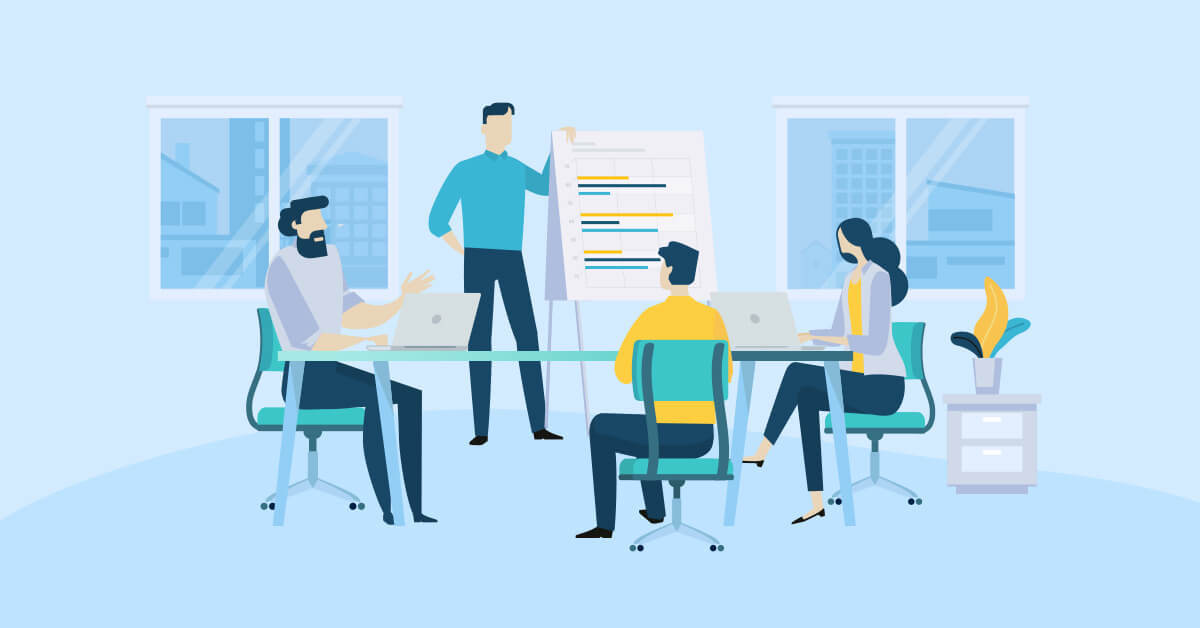Continuous training acts as a catalyst in flourishing your business goals in this competition-led market as you train employees to learn skills and evolve
Self-paced online learning is one of the major development shifts in people’s lives lately. Used in corporate training, this autodidactic approach lets people learn at their own time pace, which is great for someone learning a new skill. But how can the practice of self-directed learning be optimized in the workplace? Is it really helping employees grow?
In this article, we’ll look at new data gathered by the HR analysis firm The Fosway Group on continuous learning models. We’ll examine what the present landscape of self-directed workplace learning looks like, whether or not it’s working, and what can be done to change the paradigm.
Present Models of Continuous Learning and Their Challenges
At present, according to Fosway’s data, many workplaces rely on what’s known as the 70:20:10 strategy for helping employees grow in the workplace. This strategy dictates that 70% of a learner’s growth is achieved through challenging assignments, 20% through developmental relationships, and the final 10% through coursework and training. Using this paradigm, Fosway argues, puts the onus on managers. They are the ones expected to account for a large percentage of an employee’s development by providing those challenging assignments and developmental relationships.
What’s more, that model doesn’t seem to be working. The Association for Talent Development found that a bare 15% of business leaders were satisfied with the way their managers were helping learners in the field develop their skillsets.
Placing the entire burden of improving their training and development on the employee, however, won’t solve the problem either. What’s needed, argues Fosway, is a way to provide employees with both the materials needed to learn new skills, further their development and the support to sustain that learning. This is where many companies fall flat. According to the data gathered during Fosway’s Digital Learning Realities research project:
- Less than one-third of companies support learners applying their learning in the workplace
- Less than one-third of companies try to sustain employee learning
- More than 55% of companies surveyed fail to consistently measure learning progress
- A whopping 60% fail to take measures to drive mastery and expertise of new skills
- Only 26% adopt multi-channel learning on a more than “frequent” basis
In the report on continuous learning Fosway notes, “At the point where employees need help the most as learners – when they need to apply what they have learnt and turn it into reality – they are all too often abandoned.”
So, how do we solve the problem?
Implementing New Models and Methods
Fosway’s findings suggest that more time should be spent on leadership development: teaching managers to be better coaches, capable of helping their employees develop mastery in new skills and sustain that mastery over time. Making learning more social and giving employees real-world opportunities to use what they’ve learned on the job will help them sustain that knowledge, keeping it fresh in their minds and avoiding the effects of Ebbinghaus’ “Forgetting Curve.”
Check out the report to learn more about the eight “catalysts for social learning” that help learners find a different way to develop and sustain their skills.
Unfortunately, social learning is underutilized despite its apparent effectiveness, with only four percent of companies surveyed saying regularly include that approach in their learning programs. Social learning is easily to categorized as a ‘nice to have’, but L&D leaders must enforce a paradigm shift to design their learning programs as a continuous cycle, with each phase of the cycle presenting different opportunities for continuous learning.
This approach to continuous learning can be applied across your learning organization, from onboarding new employees, customer service training to product knowledge training. Does your organization operationalize continuous learning? We’d love to hear what methods are working for you or what challenges you have!
Want to Know More?
If you’re interested in continuous learning, and in better ways to implement long-term employee development, Fosway has partnered with us here at Infopro Learning to make their report ‘Continuous Learning Experiences: Harnessing People Power to Energize the Learning Cycle’ available for download. The report will guide you through building your own continuous learning program through a combination of custom e-learning tools, application of knowledge, and employee mentorship.



